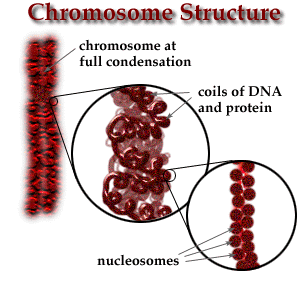
B-cell acute lymphoblastic leukemia ALL with hypereosinophilia Anomalies of t(5,14) (q31:q32)
Atlas of Genetics and Cytogenetics in Oncology and Haematology
Home Genes Leukemias Solid Tumours Cancer-Prone Deep Insight Portal Teaching
X Y 1 2 3 4 5 6 7 8 9 10 11 12 13 14 15 16 17 18 19 20 21 22 NA
t(5;14)(q31;q32)
Clinics and Pathology
Disease
B-cell acute lymphoblastic leukemia (ALL) with hypereosinophilia
Phenotype / cell stem origin
CD19+, CD10+ ALL; eosinophils are not part of the leukemic cells and do not carry the t(5;14); they represent a reactive population (eosinophilia in association with ALL is usually reactive)
Epidemiology
rarely described; 6M/1F; affects both children and adults, general features of ALL with hypereosinophilia are rarity, male predominance; and young age

Cytology
marked eosinophilia; basophilia; IL3 is over-expressed
Prognosis
prognosis appears to be poor, a feature of ALLs with hypereosinophilia
Cytogenetics
Additional anomalies
sole anomaly or accompanied with various secondary anomalies: +X, (i(7q), del(12p), +19
Genes involved and Proteins
Gene Name
Location
5q31
Protein
152 amino acids; growth factor; colony stimulating factor involved in the survival, proliferation and differentiation of multipotent hematopoietic cells
Gene Name
Location
14q32
Result of the chromosomal anomaly
Hybrid gene
Description
break in the promoter region of IL3 and in the Jh region of IgH
Fusion Protein
Oncogenesis
over-expression of IL3
External links
Other database
Mitelman database (CGAP – NCBI)
Other database
To be noted
no recent article has been found; additional cases are needed to delineate this entity; we propose that a Study Group is established and that cases are collected; if you have a case, please, contact us
Bibliography
Hypereosinophilic syndrome in acute lymphoblastic leukemia with a chromosome translocation [t(5q;14q)].
Tono-oka T, Sato Y, Matsumoto T, Ueno N, Ohkawa M, Shikano T, Takeda T.
Med Pediatr Oncol 1984; 12: 33-37.
Medline 84141597
Acute lymphoblastic leukemia with chromosomal 5;14 translocation and hypereosinophilia: case report and literature review.
Hogan TF, Koss W, Murgo AJ, Amato RS, Fontana JA, VanScoy FL.
J Clin Oncol 1987; 5: 382-390.
Medline 87140204
Three-way reciprocal chromosomal translocation in an acute lymphoblastic leukemia patient with hypereosinophilia syndrome.
McConnell TS, Foucar K, Hardy WR, Saiki J.
J Clin Oncol 1987; 5: 2042-2044.
Medline 88061522
Calla-positive acute leukaemia with t(5q;14q) translocation and hypereosinophilia–a unique entity?
Baumgarten E, Wegner RD, Fengler R, Ludwig WD, Schulte-Overberg U, Domeyer C, Schuurmann J, Henze G.
Acta Haematol 1989; 82: 85-90.
Medline 90022265
The t(5;14) chromosomal translocation in a case of acute lymphocytic leukemia joins the interleukin-3 gene to the immunoglobulin heavy chain gene.
Grimaldi JC, Meeker TC.
Blood 1989; 73: 2081-2085.
Medline 89274388
Acute lymphoblastic leukemia with eosinophilia.
Fishel RS, Farnen JP, Hanson CA, Silver SM, Emerson SG.
Medicine 1990; 69: 232-243.
Medline 90325994
Activation of the interleukin-3 gene by chromosome translocation in acute lymphocytic leukemia with eosinophilia.
Meeker TC, Hardy D, Willman C, Hogan T, Abrams J.
Blood 1990 Jul; 76: 285-289.
Medline 90315422
Non-random involvement of chromosome 5 in ALL.
Chen Z, Morgan R, Sandberg AA.
Cancer Genet Cytogenet 1992; 61: 106-107.
Cytogenetic analysis in relapsed childhood acute lymphoblastic leukemia.
Heerema NA, Palmer CG, Weetman R, Bertolone S.
Leukemia 1992; 6: 185-192.
Power of the MAC (morphology-antibody-chromosomes) method in distinguishing reactive and clonal cells: report of a patient with acute lymphatic leukemia, eosinophilia, and t(5;14).
Knuutila S, Alitalo R, Ruutu T.
Genes Chromosomes Cancer 1993; 8: 219-223.
Contributor(s)
Written
12-1999
Jean-Loup Huret
Citation
This paper should be referenced as such :
Huret JL . t(5;14)(q31;q32). Atlas Genet Cytogenet Oncol Haematol. December 1999 .
URL :Anomalies t514ID1111
© Atlas of Genetics and Cytogenetics in Oncology and Haematology
indexed on : Fri Nov 5 18:49:19 MET 2004
Home Genes Leukemias Solid Tumours Cancer-Prone Deep Insight Portal Teaching
For comments and suggestions or contributions, please contact us

Leave a Reply
You must be logged in to post a comment.